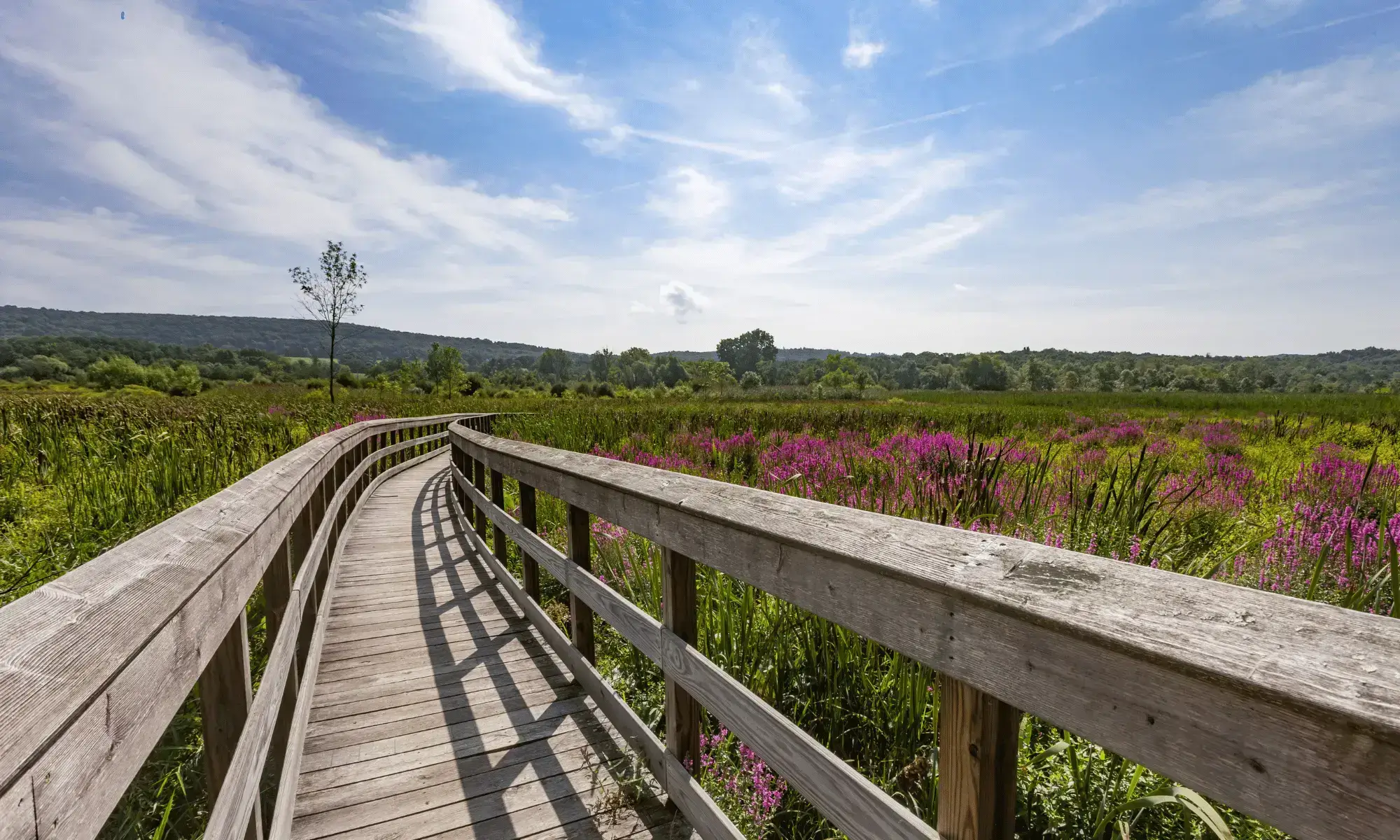Hi, my name is Saim. Whenever my friends question my constant travels, I tell them that my soul craves the adventure and discovery that comes with exploring new places.
In this blog, I’ll guide you through hiking the Appalachian Trail from start to finish.
I started hiking when I thought my life was destroyed, but now traveling is my habit.
I’m telling you this because the Appalachian Trail is the longest hiking-only footpath in the world; it will take around 5 to 7 months.
You will need patience and energy, and trust me, energy comes from nature. This trail is for those people who are broken and have enough time or, of course, who are true hikers.

To tackle the Appalachian Trail, you should have good cardiovascular fitness, leg strength, and core stability. The ability to carry a heavy backpack and strong mental resilience are essential.
Preparing with long-distance hikes and training on varied terrain is recommended for a successful thru-hike.
Many hikers start the trail without being in peak physical condition, using the journey to improve their fitness gradually.
The Appalachian Trail (AT) spans about 2,190 miles from Georgia to Maine. Its length means it can take 5 to 7 months to complete, but many hikers choose to explore sections or do day hikes.
The trail’s vast length offers various hiking options, from full thru-hikes to shorter section hikes.
The AT varies in difficulty, with some sections manageable and others challenging. Key factors include:
Terrain: Expect rocky paths and steep slopes.
Elevation: The trail includes significant elevation changes.
Weather: Be prepared for diverse and unpredictable conditions.
Navigation: While generally well-marked, some areas require good navigation skills.
Is It Right for You? Consider your fitness level and hiking experience. The AT offers a rewarding challenge for seasoned hikers.
Sounds hard? No worries. If you have the proper mindset, you can do it.
Check out the 2023 Appalachian Trail Thru-Hiker Survey on The Trek for detailed statistics on the 2023 completion rates and other insights.

Yes, there are permits and fees associated with hiking the Appalachian Trail, and these can vary depending on the section you plan to hike. Here’s what you need to know:
Appalachian Trail Conservancy (ATC) Registration:
While there is no fee to hike the Appalachian Trail itself, the ATC encourages hikers to register their trips, especially for long-distance hikes. This helps them track the number of hikers and manage the trail more effectively. Registration can be done online through the ATC’s website.
National Park Permits:
If you plan to hike through the section of the trail that crosses the Great Smoky Mountains National Park or Shenandoah National Park, you will need a permit for backcountry camping. There is a fee for this permit, and reservations are required.
Parking Fees:
Parking fees at trailheads can vary. These fees are typically paid at self-service kiosks or online where available.

Yes, the Appalachian Trail is well-marked with white blazes and well-maintained by volunteers and managing agencies. However, trail conditions can vary, so it is recommended that you carry a map and compass.
The Appalachian Trail (AT) is generally not dog-friendly for several reasons, especially when you start for a thru-hike
While hiking the Appalachian Trail, you may encounter a diverse range of Wildlife. Here’s an overview of some common animals you might see:
Mammals: White-tailed deer, black bears (especially in the south), raccoons, and coyotes.
Birds: Wild turkeys, hawks, and occasionally eagles.
Reptiles/Amphibians: Eastern timber rattlesnakes, copperheads, frogs, and salamanders.
Insects: Mosquitoes, ticks, and various butterflies.
When hiking the Appalachian Trail, packing wisely is crucial for a safe and enjoyable experience. Here’s a list of essential items to bring:
A durable, comfortable backpack with adequate capacity (50-70 liters) to carry all your gear.
Tent: Lightweight, weather-resistant tent.
Sleeping Bag: Suitable for the season and temperature.
Sleeping Pad: For insulation and comfort.
Base Layers: Moisture-wicking shirt and pants.
Insulating Layer: Fleece or down jacket.
Outer Layer: Waterproof and windproof jacket.
Hat and Gloves: Depending on the season.
Extra Socks and Underwear: Moisture-wicking and quick-drying.
Hiking Boots/Shoes: Sturdy, waterproof, and broken-in
.
Food: Lightweight, non-perishable meals and snacks.
Water Treatment: Filter, purifier, or purification tablets.
Water Bottles/Hydration System: To carry and store water (1.5 to 2.5 L).
Maps and Compass: Trail maps and a reliable compass.
GPS Device: Optional but helpful for navigation.
First Aid Kit: Including basics like bandages, antiseptic, and medications.
Multitool/Knife: For various tasks and emergencies.
Headlamp/Flashlight: With extra batteries.
Fire Starter: Matches or a lighter in a waterproof container.
Whistle: For signaling in emergencies.
Sunscreen and Lip Balm: With SPF protection.
Insect Repellent: To keep bugs at bay.
Toiletries: Including biodegradable soap and a small trowel for digging a cathole.
Trekking Poles: For stability and reducing strain on your knees.
Trash Bags: To pack out all trash.
The Appalachian Trail (AT) runs from Springer Mountain in Georgia to Mount Katahdin in Maine. Here’s a brief guide on its location and directions:
Location: Springer Mountain, Georgia.
Directions: The trailhead is accessible via the Springer Mountain Trailhead.
The closest central town is Dahlonega, GA. From Dahlonega, take Hwy 60 to the Amicalola Falls State Park entrance, then follow signs to the Springer Mountain Trailhead.
Location: Mount Katahdin, Maine.
Directions: It is accessible via the Katahdin Stream Campground.
The closest town is Millinocket, ME. From Millinocket, follow signs to Baxter State Park and then to Katahdin Stream Campground.
Shenandoah National Park: Located in Virginia, accessible via Skyline Drive.

Great Smoky Mountains National Park is located on the border of North Carolina and Tennessee and is accessible via Newfound Gap Road.
Harper’s Ferry, WV: A common resupply and visitor centre location accessible from US Route 340.
The best time to hike the Appalachian Trail (AT) depends on the section you’re tackling and your preferences:
Spring (April – June): Mild weather, blooming flowers, but possible rain and mud.
Summer (July – August): Warm with long days, but hot and humid with many bugs.
Fall (September – November): Cool temperatures and stunning foliage, fewer bugs, but shorter days.
Winter (December – March): Quiet and snowy, but icy and challenging conditions.
For a Thru-Hike: Start in early spring (March – April) and aim to finish by late fall (October – November) to avoid extreme weather and crowded conditions.
For Section Hiking: Late spring through early fall is generally ideal for most sections.
The time to complete the Appalachian Trail varies by hiker:
Thru-Hikers: It typically takes about 5 to 7 months to hike the entire 2,190 miles (3,528 kilometers) from Springer Mountain to Mount Katahdin.

Section Hikers: Time varies depending on the sections hiked. Completing individual sections can take anywhere from a few days to several weeks.
Please love nature, and don’t do anything that can damage the natural beauty. A real hiker always follows those steps.
Research the trail and weather, obtain necessary permits, and follow regulations.
Pack out all trash, including food scraps and personal items. Use designated restroom facilities or follow proper waste disposal methods.
Preserve natural features and avoid picking plants or disturbing Wildlife.
Use a camp stove for cooking instead of building fires. If fires are permitted, use established fire rings and keep fires small.
Respect Wildlife and observe animals from a distance. Store food securely to prevent attracting Wildlife.
Keep noise levels down and respect the solitude of others.

In case of an emergency on the Appalachian Trail:
Call for Help: Use a cell phone or satellite communicator to call 911. Provide your location and details.
Stay Put: If lost or injured, stay in place to make it easier for rescuers to find you.
Administer First Aid: Use a first aid kit to address injuries if you’re trained to do so.
Signal for Help: Use a whistle, mirror, or bright clothing to attract attention.
Prepare for Evacuation: Follow instructions from rescuers and be ready to assist with your evacuation.
Consider joining local hiking groups or clubs for support and guided adventures.
Appalachian Trail Conservancy (ATC):
Explore the Appalachian Trail and immerse yourself in nature’s stunning beauty. Each hike offers a unique adventure, from breathtaking views to serene forests.
Embrace the challenge and find joy in the journey, knowing that every step brings you closer to nature’s wonders.
Let the trail inspire you and offer a sense of accomplishment as you connect with the great outdoors.